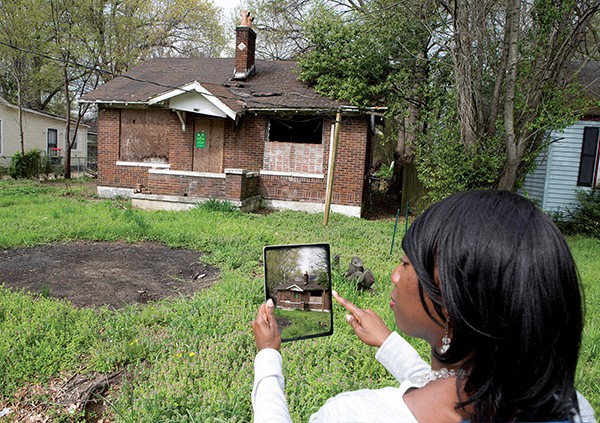It is easy to list the big challenges that exist in Memphis — poverty, crime, education, health, blight.
What’s harder is finding firm facts that paint accurate depictions of those challenges. How many people actually live in poverty here? Where do they live? What are their demographics?
Even more difficult to find are the group or groups working on the problems you care about. Even if you find those groups, it can be harder still to vet their reputations to ensure your donor dollars will make a real impact.

The Community Foundation of Greater Memphis (CFGM) launched two websites this week to make the answers to those questions easier to find.
One site, wherewelivemidsouth.org, is a “library of resources” that has pulled together public information from across the community and made it easy to get the real picture of what’s going on in your neighborhood, the city, and the whole Mid-South. Another site, wheretogivemidsouth.org, lets you see what organizations are working on challenges where you live.
“People want accountability,” said Bob Fockler, president of the CFGM. “We’re tired of pushing on ropes but not seeing any direct impact on what we’re trying to do.”
Fockler said the idea for the sites hatched about nine years ago. Through a series of programs over the years, his foundation exposed its donors to the real data on topics as varied as Memphis parks to the Affordable Care Act “and they showed up in droves.” Educating donors means more strategic giving and, he said, more giving in general.
But CFGM leaders quickly saw further benefits of aggregating real data, Fockler said, such as better-educated public servants and press corps, and “stopping bar fights.” Fockler said the sites are meant to be a single, go-to source for information definitive enough to be considered the “Guinness Book of World Records” that settles disputes about different Memphis topics.
But it can also provide real ammunition for community organizers, neighborhood associations, parent teacher associations, high school students, and others.
“It gives people on the neighborhood level access to [data] to be able to advocate for their neighborhoods in a different way,” said CFGM Vice President Sutton Mora Hayes.
Most of the information on the site is available to the public on the Internet already. But, Hayes said, “many of the sites are wonky and are hard to wade through the text and spreadsheets.”
The new CFGM sites are graphical with click-through functions that make it a sort of Choose Your Own Adventure book for community information. Instead of knowing exactly what you’re looking for, the site allows you to explore and find interesting facts on your own.
The City of Memphis launched a similar web dashboard in October called MEMFacts. It’s from the Office of Performance Management at Memphis City Hall and offers government information about public safety, neighborhoods, youth, economy, and government. MEMFacts’ goal is also accountability.
“Everyone wants a government that works,” the site says.
The foundation’s Where to Give website links from the Where We Live website. So, if you find information on poverty and decide you want to help, the sites help visitors connect with nonprofits organizations.
It’s hoped the site will one day be the definitive list of Memphis nonprofits that are vetted and that all of them give the same information, making it easier to compare them.